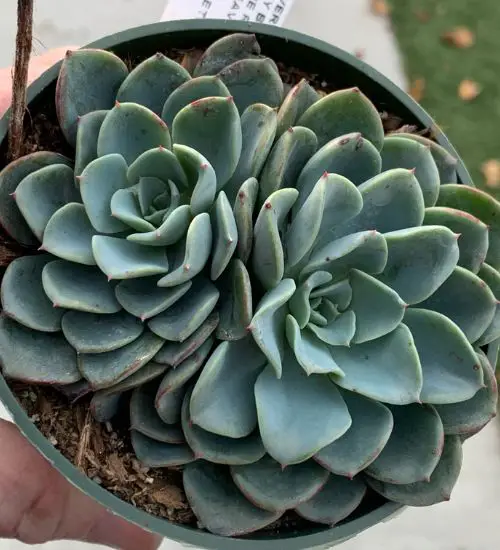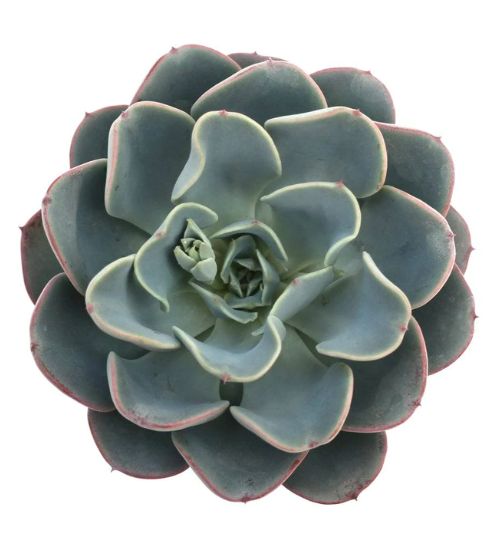Sun: Full sun to partial sun
Water: Typical water needs for a succulent
Temperature: Zone 10a from 30° F to 35° F (-1.1 ° C to 1.7° C) to Zone 11b from 45° F to 50° F (7.2° C to 10° C)
Winter Survival: Not cold hardy
Propagation: leaves, stem cuttings
Flower: In the Spring
Flower Type: Yellow
Toxic: Generally non-toxic to humans and animals
Dormant: winter
Space Requirement: Indoors & Outdoors
Common Problems: Plants may rot if overwatered, Fungal diseases, pests
Where to buy Echeveria ‘Galaxy Blue’?
Basc Care for Echeveria ‘Galaxy Blue’
Watering
Regular watering period should be every 2 weeks
Can you water your succulent more than what its need? The answer is yes and no. In extreme conditions, you can water your plants more often when you notice the soil is completely dry.
Fertilizing
Only feed this succulent during its active growing seasons which means winter. Use the right fertilizer applied in the right amounts. Applying half-strength balanced fertilizer every month or so is recommended for optimal results.
Do not fertilize during winter as the plant is dormant.
Sun & Location Requirements for "Mexican Hens & Chicks"
Echeveria ‘Galaxy Blue’ grows best in full sun to partial sun, so make sure the plant is getting at least 6 hours of direct sunlight each day. Depending on where you live and what time of year it is, this could mean moving your succulent outdoors during the summer months or keeping it near a south-facing window all year round.
Echeveria ‘Galaxy Blue’ is not cold hardy and does not survive in freezing conditions. However, there are certain strategies that can be used to help the plant thrive despite the chill of winter. Proper drainage and insulation are essential for succulent X during periods of extreme cold. Placing a layer of mulch or gravel on the soil around the plant can also help keep it warm.
Any succulents in the group will need a medium space to grow. You can place your pot at your table or window. Since this plant needs more space than mini succulents, you should consider do not plant them together with other succulents/plants.
Propagation
Propagating succulents from leaves is an easy and cost-effective way to grow new plants. All you need are a few healthy leaves from the mother plant, some potting mix, and regular watering. After a few weeks you'll have brand new succulents that you can watch grow!
One of the easiest and most popular ways to propagate Echeveria ‘Galaxy Blue’ is by stem cuttings. This method involves cutting a stem from an existing succulent and planting it in soil to grow a new plant.
Toxicity

Echeveria ‘Galaxy Blue’ is generally non-toxic to humans and animals. However, it is important to be aware that certain parts of the plant may contain toxins which can cause mild skin irritation. It is advised that you keep the plants away from small children or pets, as they may unknowingly ingest them and suffer ill effects.
Pests and Diseases
Echeveria ‘Galaxy Blue’ can be affected common pests and diseases like most of the other succulents such as mealybugs.
If you do spot any of pest signs, you can treat your succulent using below methods.
- Mealybugs: quarantine, clean infected plants, soapy water.
Besides that, to prevent serious health issues from happening, keep your succulent in a well-ventilated area and check it regularly for any signs of pests or health problems.


